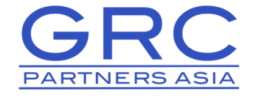In an increasingly complex regulatory environment, organizations are constantly seeking ways to enhance compliance, mitigate risks, and drive operational efficiency. One approach gaining traction: the integration of Governance, Risk, and Compliance (GRC) efforts with employee learning and development initiatives. By harmonizing these critical components, companies can unlock several key advantages.
Here are just a few benefits to know:
Centralized Management of Policies, Procedures, and Training
GRC and Learning solutions that can be used in tandem simultaneously allow for the centralized administration of policies, standard operating procedures, and relevant training courses within a unified strategy. Employees can easily access the resources needed to understand and adhere to compliance requirements, regulatory updates, and organizational best practices.
Streamlined Delivery of Training
A key aspect of compliance is ensuring employees receive proper training on mandated topics. When GRC solutions join forces with Learning initiatives, this enhances knowledge retention, documents training outcomes, and verifies competencies essential for mitigating risks.
For example, SAI360’s Conflicts of Interest (COI) module provides access to on-demand COI training. Delivering this training in the flow-of-work enhances knowledge retention, as well as documents training outcomes, making it the most sophisticated COI solution on the market.
Enhanced Reporting and Analytics Capabilities
Powerful reporting and analytics tools can be used to monitor employee training completion rates, identify risk areas or knowledge gaps, and measure the effectiveness of training programs. By combining Learning analytics insight with GRC data, organizations gain a more holistic view of risk across the organization, which enables more thorough evidence-based decision-making.
Improved Cross-Functional Collaboration
Integrating your organization’s GRC and E&C Learning strategies facilitates collaboration between compliance, risk management, human resources, training, and operational teams. Alignment of policies, controls, and training requirements becomes more seamless, breaking down organizational silos and promoting a cohesive approach to ethics, governance, compliance, and risk management.
Cost and Risk Reduction
Non-compliance can expose organizations to substantial risks, including regulatory penalties, legal liabilities, and reputational damage. By proactively managing compliance through GRC-plus-Learning initiatives, companies can reduce the likelihood of costly violations and the associated financial and operational impacts.
Final Thoughts
Implementing a unified GRC-Learning approach enables organizations to establish a robust compliance culture, empower employees with the necessary knowledge and skills, and continuously adapt to evolving regulatory landscapes.
As governance and risk management practices become increasingly intertwined with human capital development, this teamwork offers a strategic path toward sustained compliance and operational resilience.
This article was originally published by SAI360.






